

Harry Winston
Nouveautés 2013 des montres Harry Winston
Midnight Minute Repeater
Le cadran est dessiné de manière à ce que les composants essentiels de cette complication sophistiquée soient visibles et que le porteur puisse les observer en action. Le cadran excentré des heures et des minutes présente deux ouvertures sur le mécanisme de répétition, généralement caché, et sur les marteaux qui frappent les timbres. Ce type de construction est inédit. En effet, dans la plupart des répétitions minutes, les timbres et marteaux sont placés au verso de la montre, le mécanisme de répétition restant habituellement caché sous le cadran. Ici, l’enchaînement de toute la séquence d’activation et le fonctionnement de la répétition est à la fois visible et audible.
On perçoit ainsi le mouvement des leviers et râteaux merveilleusement décorés à la main, ainsi que l’action des deux marteaux discrètement ornés des lettres H et W lorsqu’ils frappent les timbres circulaires. Ces timbres forment deux spirales qui attirent l’oeil sur les cercles harmonieusement dessinés sur le cadran.
The dial is designed in such a way as to make a number of the most critical repeater components visible, allowing the wearer to observe them in operation. The excentered hours and minutes dial permits two large apertures in the dial which expose the normally hidden repeater mechanism, and also allow the hammers to be seen as they strike the gongs.
This type of construction is unusual –in most repeaters, the gongs and hammers are located at the back of the watch and if visible at all can only be seen by taking the watch off the wrist; the actual repeater mechanism is usually hidden under the dial. Here, the full sequence of events in the actuation and functioning of the repeater is made both visible, and audible, from the movement of the beautifully hand-finished levers and racks, to the striking of the two hammers –embellished discreetly with the letters H and W –on the circular gongs.
The gongs themselves form two spirals which lead the eye through the gracefully nested circles from which the dial is composed.
Opus XIII
Cinquante-neuf aiguilles pivotantes des minutes, onze triangles rotatifs des heures et un volet coulissant offrent un spectacle magique : les heures et les minutes apparaissent ou disparaissent instantanément pour reproduire la mesure du temps.
Les aiguilles des minutes, rouges toutes les cinq minutes, s’alignent sur un chemin circulaire avant de se retirer à l’unisson quand une heure s’est écoulée.
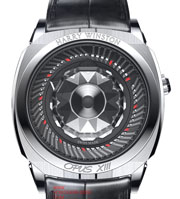 Les triangles des rotatifs indiquent les heures en apparaissant sous un dôme facetté et se retournent quand leur tour est passé.
Les triangles des rotatifs indiquent les heures en apparaissant sous un dôme facetté et se retournent quand leur tour est passé.
Toutes les douze heures, c’est le logo Harry Winston qui apparaît, pour ne disparaître que soixante minutes plus tard. Les cinquante-neuf aiguilles des minutes pivotent sur une bague qui comporte autant de pignons maintenus entre deux rubis. Le nombre de rubis fonctionnels contenus dans la montre s’élève à 242.
Sous le verre en saphir fumé, on aperçoit un module extraordinaire qui comprend cinquante-neuf ressorts-sautoirs – un pour chaque aiguille des minutes – taillés dans une seule pièce selon la technologie LIGA (lithographie, galvanoplastie, formage).
Opus XIII n’a en commun avec toute autre montre mécanique que son balancier et son échappement. Le reste du mouvement, purement novateur, est une création originale de l’horloger indépendant Ludovic Ballouard.
L’affichage est assuré par deux sources d’énergie indépendantes fonctionnant de manière coordonnée. Un premier barillet alimente l’échappement via le rouage et entretient l’oscillation du balancier à 21'600 alternances par heure.
L’autre fournit l’énergie nécessaire à l’affichage des minutes, déclenché toutes les 60 secondes par la roue de centre.
L’élément clé est la bague extérieure des minutes, alimentée par le second barillet, qui saute d’un cran à chaque minute. Contrôlée par une came activée par la roue de centre, elle est libérée puis bloquée par une bascule à deux palettes. Un tenon fait sauter chaque aiguille sur quarante degrés, l’une après l’autre, et les minutes s’affichent successivement sur le cadran. A la fin de la 59ème minute, une deuxième bague extérieure entre en jeu.
Grâce à son contour crénelé, les cinquante-neuf aiguilles se rabattent et se dissimulent simultanément.
Le mécanisme des heures est tout aussi ingénieux. On retrouve le principe de la bague extérieure qui fonctionne par paliers, ici toutes les soixante minutes. Elle fait tourner le triangle de l’heure écoulée sur 180°, de sorte qu’il disparaît sous le dôme facetté, et celui de l’heure suivante apparaît simultanément à l’extérieur. Un levier fait tomber l’arête de la came, poussant une crémaillère à engrener un pignon qui fait avancer la bague.
A la 12ème heure, au lieu de dévoiler un nouveau triangle, elle actionne une roue reliée par une tige et ouvre un clapet coulissant pour dévoiler le logo Harry Winston au centre du dôme facetté.
Les deux barillets se remontent par la couronne, en arrière ou en avant.
Un pignon à bascule entraîne le barillet du rouage quand on tourne la couronne dans un sens, l’autre barillet quand on tourne la couronne dans le sens opposé.
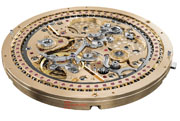 Fifty-nine pivoting minutes hands, eleven rotating triangles for the hours, and a sliding trapdoor perform a magic show where minutes and hours appear or vanish instantly — and, of course, tell the time. Minutes accumulate around a track, each five minutes in red, withdrawing in unison when they complete the circle of the hour. Silver triangles spring in turn from a faceted dome to show the hours, rotating back when their duty’s done.
Fifty-nine pivoting minutes hands, eleven rotating triangles for the hours, and a sliding trapdoor perform a magic show where minutes and hours appear or vanish instantly — and, of course, tell the time. Minutes accumulate around a track, each five minutes in red, withdrawing in unison when they complete the circle of the hour. Silver triangles spring in turn from a faceted dome to show the hours, rotating back when their duty’s done.
Every twelve hours, Harry Winston’s logo is revealed on the dial, only to vanish sixty minutes later. The fifty-nine minutes hands pivot on a ring of as many steel shafts, each held between two ruby bearings, bringing the number of jewels in the timepiece to 242.
No other timepiece ever made has as many functional jewels. Each bearing has to be set and adjusted to the utmost precision — a test of the watchmaker’s dexterity and patience.
The ruby ball bearings for the sliding shutter are so tiny that the package had to be opened in a non-static environment lest they fly off. Don’t expect a massive timepiece, in fact the Opus XIII looks relatively discreet, even mysterious, its inner workings covered by a facetted dome.
Beneath a smoked sapphire crystal you catch a glimpse of what looks like the fan of a jet engine.
This is an extraordinary component, comprising fifty-nine jumper springs — one for each minutes hand — carved from a single piece using LIGA technology (lithography, electroplating and molding).
Opus XIII has only one thing in common with any other watch and that is its balance and escapement; the rest of the mechanism is pure invention, the brainchild of independent watchmaker Ludovic Ballouard.
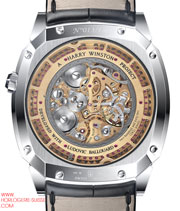 The display is produced by two separate power sources working as a team. One mainspring barrel drives the escapement through the going train and keeps the balance swinging at a steady 21’600 vibrations an hour.
The display is produced by two separate power sources working as a team. One mainspring barrel drives the escapement through the going train and keeps the balance swinging at a steady 21’600 vibrations an hour.
The other barrel provides the energy for the display of minutes, triggered every 60 seconds by the center wheel of the going train. The key element is an outer minutes ring driven by the second barrel. Every minute, it jumps forward a step, released then locked by a rocking lever with two pallet stones, controlled by a cam working off the center wheel. A peg on the advancing ring flips each minutes hand forty degrees in turn, revealing them in succession around the dial.
At the end of the 59th minute, a second outer ring comes into play, its crenelated rim simultaneously rotating the fifty-nine minutes hands back into their hiding places. The mechanism for the hours is no less ingenious. Here again it relies on an outer ring that jumps forward every sixty minutes, turning the triangle of the old hour 180° so that it disappears beneath the faceted dome on the dial, and simultaneously turning up the next hour.
At the heart of this mechanism is a snail cam that rotates once an hour. A lever drops off the edge of the cam, pulling a rack to turn a pinion that advances the hours ring. At the 12th hour, instead of turning up a triangular hour hand, the hours ring rotates a wheel attached to a connecting rod that pulls open a sliding shutter to reveal the Harry Winston logo in the center of the faceted dome. Both mainspring barrels are wound by turning the crown back and forth.
A rocking pinion engages the barrel for the going train when the crown is turned in one direction and shifts over to engage the other barrel when the crown is turned in the opposite direction.
Similarly, when setting the time, the crown is pulled out and turned one way to advance the minutes and the other to advance the hours.
Harry Winston Midnight Monochrome Automatic
Pour reproduire le grain unique de l’ardoise, les cadraniers de Harry Winston ont développé une nouvelle technique, loin des finitions habituellement utilisée en horlogerie, jusqu’à obtention d’une plaque à effet ardoisé. Le cadran, en plus d’une beauté minérale, offre une parfaite longévité en accord avec les principes d’excellence de la Maison.
L’heure, les minutes et la date animent sobrement le cadran gris métallique sur le modèle homme.
Le modèle homme est doté d’un boîtier en or gris d’un diamètre de 42 mm. Le mouvement mécanique à remontage automatique, composé de 191 éléments, perlé et décoré Côtes de Genève, est visible à travers le fond saphir de la montre.
Il est doté de deux barillets dont un avec bride glissante.
Sa réserve de marche est de 45 heures.
In order to reproduce the unique structure of slate, the Harry Winston dial-makers developed a new technique far removed from the usual watchmaking finishes, honing it to create a plate with a truly slate-like effect. In addition to its mineral beauty, the dial thus guarantees a degree of longevity entirely in tune with the principles of excellence upheld by the House of Harry Winston. The sophisticated yet understated metallic grey dial of the men’s model is animated by the hours, minutes and date indications.
The men’s model is equipped with a white gold case with a 42 mm diameter.
The mechanical automatic winding movement composed of 191 parts, circular-grained and adorned with Côtes de Genève, is visible through the sapphire crystal display back.
It is equipped with two barrels including one with a slipping spring and has a 45-hour power reserve.
Harry Winston Ocean Tourbillon Jumping Hour
Le tourbillon de l’Ocean Tourbillon Jumping Hour adopte une configuration très inhabituelle. Au lieu d’être placé au verso de la platine, il est suspendu à deux ponts en acier étincelants, anglés à la main.
Il semble ainsi flotter dans l’espace et fonctionner sans connexion mécanique apparente avec le reste de la montre. Il faut des yeux aiguisés pour en découvrir le secret : le tourbillon est actionné par une roue dentée, engrenée à sa circonférence de manière quasi imperceptible, sous le tour des minutes.
Le squelette du tourbillon flottant entre deux verres en saphir transparent offre un contraste remarquable avec l’intense opacité du cadran en saphir noir.
Ce dernier est lui-même suspendu par un système de ponts ajourés, méticuleusement finis à la main, et il affiche l’heure par sauts instantanés, dans un guichet à 12 heures.
Contrairement à nombre de montres à heure sautante, le modèle Ocean Tourbillon Jumping Hour comporte une aiguille des minutes de conception spécifique, qui ne recouvre jamais le guichet des heures.
The tourbillon in the Ocean Tourbillon Jumping Hour has a very unusual design. Instead of being located on the back of the movement plate, it is suspended from two gleaming, hand-chamfered steel bridges which seem to hold it free in space –seeming to move with no apparent mechanical connection to the rest of the timepiece.
Only sharp eyes will uncover its secret: the tourbillon is driven by a wheel geared to its outer circumference, which is nearly completely concealed by the minute track of the dial.
Floating in between two panes of sapphire, the tourbillon's open structure contrasts with the rich opacity of the dial, which is also suspended from a system of meticulously hand-finished, open-worked bridges.
Executed in black sapphire, the dial reveals the hour through an aperture at the 12 o’clock position, which "jumps" instantaneously once per hour.
Unlike many jumping hour watches, the Ocean Tourbillon Jumping Hour timepiece has a minute hand which has been specifically designed so that the hour window is never blocked.
Harry Winston Ocean Dual Time Monochrome
L’Ocean Dual Time Monochrome affiche le temps sur deux zones différentes, indiquant l’heure d’origine et l’heure locale quel que soit l’endroit où le voyageur se trouve. Fait inhabituel, chaque cadran a son propre indicateur jour/nuit (dans la plupart des montres à double fuseau, soit il est absent, soit il est associé à la seule heure d’origine). Il est tout aussi rare de présenter une grande date, à chiffres indépendants, en position verticale et non en position horizontale.
Ocean Dual Time Monochrome lance également un défi au temps, son boîtier taillé dans le ZaliumTM, un alliage unique d’aluminium et de zirconium exclusif à Harry Winston. Léger, hautement résistant à la corrosion, il vient en contrepoint sophistiqué de la patine intemporelle réalisée à la main sur le cadran.
The Harry Winston Ocean Dual Time Monochrome shows the time in two different time zones: home time and local time, wherever a traveler may be. Unusually, each dial has its own day/night indicator (in virtually all dual time zone watches this is either absent, or present for only home time).
The large date display is also unusual in presenting the date, in two digits, in a vertical rather than the ordinary horizontal orientation.
And yet at the same time, the Ocean Dual Time Monochrome defies time: the case is made of Harry Winston's unique, proprietary alloy, ZaliumTM, composed of aluminum and zirconium. Light, highly resistant to corrosion, and with a particular gun-mental sheen unlike any other alloy, it is a sophisticated counterpoint to the pre-aged, hand-finished patina of the dial.
Harry Winston Histoire de Tourbillon 4
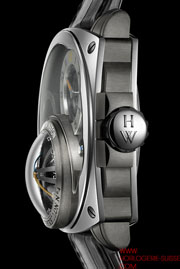 Le coeur de Histoire de Tourbillon 4 est constitué d’un unique oscillateur hébergé dans trois cages concentriques, chacune d’elle pivotant à sa propre vitesse, mais aussi selon un angle différent calculé en fonction des autres cages.
Le coeur de Histoire de Tourbillon 4 est constitué d’un unique oscillateur hébergé dans trois cages concentriques, chacune d’elle pivotant à sa propre vitesse, mais aussi selon un angle différent calculé en fonction des autres cages.
Une montre-bracelet occupant un espace tridimensionnel, le tourbillon doit transcender les lois de sa création pour devenir lui-même un espace à part entière.
La cage intérieure, qui abrite l’oscillateur et l’échappement, effectue une rotation toutes les 45 secondes. La cage intermédiaire effectue une rotation toutes les 75 secondes. Et la troisième, la cage externe, tourne à la vitesse d’une révolution toutes les 300 secondes. Ensemble, elles garantissent qu’à aucun moment la force gravité n’est suffisamment puissante pour affecter les battements réguliers de l’oscillateur.
Histoire de Tourbillon 4 dispose ainsi de deux barillets à rotation rapide qui permettent un rendement énergétique supérieur tout en occasionnant peu de frottement, et d’un tourbillon qui, en dépit de ses dimensions, est incroyablement léger et ne pèse que 1,57 grammes.
Pour que le mécanisme soit solide, léger, et résistant à la corrosion, les platines et les ponts sont réalisés en titane
Réserve de marche de 50 heures.
The heart of Histoire de Tourbillon 4 is a single oscillator, contained within three concentric cages, each of which rotates not only at a different speed, but at a different angle with respect to the other cages. As the wristwatch is truly an inhabitant of three dimensional space, so the tourbillon must transcend its origins and become one as well.
The innermost cage, which encloses the oscillator and escapement, rotates once every 45 seconds. The intermediate cage, which encloses the first, rotates once every 75 seconds. And the third, outermost cage rotates at a stately speed of one revolution every 300 seconds –all together ensuring that at no moment will gravity be able to disturb the steady heartbeat of the oscillator.
Throughout Histoire de Tourbillon 4, enhancements and refinements in construction that extend to every aspect of the movement ensure superb performance and split second accuracy, including two, fast rotating barrels to deliver superior energy with lower friction, and a tourbillon that despite its dimensions is almost unbelievably light: only 1.57 grams.
To provide a strong, light, corrosion-resistant foundation for its mechanism, the plates and the bridges are made of titanium
Power reserve : 50 hours.
Eric Cosandey
©
toute reproduction strictement interdite
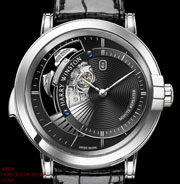

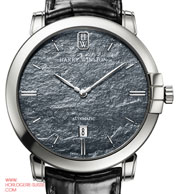
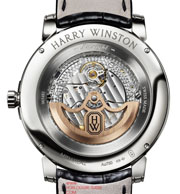

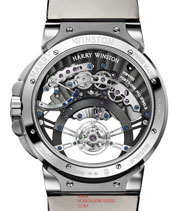
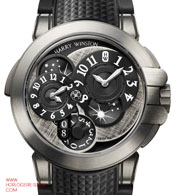
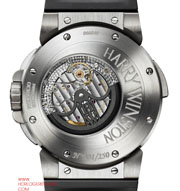

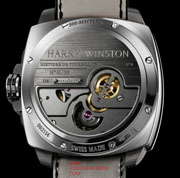
Tweet
On en parle sur le forum
La page de la marque